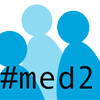Seniors’ Navigation: Understanding Their Needs so as to Create an Adaptive Smartphone Application
|
If you are the presenter of this abstract (or if you cite this abstract in a talk or on a poster), please show the QR code in your slide or poster (QR code contains this URL). |
Abstract
Background. The World Health Organization (WHO, 2007) underlined the importance of older adults' mobility to allow them a dynamic and independent life. Besides, losing mobility is a predictive factor of loss of autonomy, institutionalization, falling and death (Webber et al. 2010). Navigation helping younger users is nowadays widely available in mobile devices. Despite the variety of scopes used for their development, to the best of our knowledge, seniors’ needs and requirements are not addressed by any navigation application, at least at a commercial level. The aim of T&Tnet project is to provide a personalized context-based multimodal and multinational social journey planning, and an easy-to-follow adaptive real-time guidance. Identifying the needs according to the lifestyle of the target population is a crucial preliminary stage to develop an adapted social navigation application.
Objective The aim of this exploratory study is to identify the daily navigation needs and issues of seniors from four countries (France, Austria, Norway and Spain).
Methods: Forty-nine seniors having some experience with mobile devices from four countries (Austria: 11, 71 y/o, Norway: 16, 70 y/o, Spain: 16; 68 y/o and France: 6, 76 y/o) accepted and signed the consent to participate in this exploratory study. Each country organized a two-hour focus group (FG) divided in three sections: a) a discussion of end-users’ habits, needs and issues during daily navigation, b) a brainstorming about functions of applications that could improve their experience during navigation – based on a short demo with Google maps in smartphones and tablets, and c) an evaluation of ideas generated both by the T&Tnet Consortium and end-users during the brainstorming phase.
Results In this communication we summarize the results concerning habits, needs and issues by country. a) end-users’ habits, Spanish seniors walk every day and take the bus frequently; they also use private cars quite often; Austrian seniors prefer the underground and tram because it is fast, convenient and there are many connections; for French seniors, the preferred means of transportation is by bus because it is "easy to use," fast and "friendly"; and finally, Norwegian seniors prefer to walk or to use private vehicles to using public means of transportation, b) needs and issues in a daily navigation, in Spain the main barriers are the lack of information about bus frequencies or about adapted means of transportation for family members with disabilities, in Austria the main issue is a lack of information regarding road situation, in France the main barriers are the use of stairs to reach the metro or the high steps to get on the bus, also lack of information about buses (schedule, strike, handicap access); in Norway participants are faced with various challenges: buying and validating tickets, inoperable escalators, knowing which tram or train-line to take, on which side to pick it up, and lack of information while traveling, making it difficult to know when to get off.
Conclusion: All participants from all countries ask for more information regarding public means of transportation and more accessibility information. In all countries, information about routes and timetables along with information and possibility to buy tickets via the application would be highly appreciated. Delays, road works and changes in the routes and timetables are a source of frustration for seniors. The results of this study will establish the first mock-ups and technical requirements of the application.
Objective The aim of this exploratory study is to identify the daily navigation needs and issues of seniors from four countries (France, Austria, Norway and Spain).
Methods: Forty-nine seniors having some experience with mobile devices from four countries (Austria: 11, 71 y/o, Norway: 16, 70 y/o, Spain: 16; 68 y/o and France: 6, 76 y/o) accepted and signed the consent to participate in this exploratory study. Each country organized a two-hour focus group (FG) divided in three sections: a) a discussion of end-users’ habits, needs and issues during daily navigation, b) a brainstorming about functions of applications that could improve their experience during navigation – based on a short demo with Google maps in smartphones and tablets, and c) an evaluation of ideas generated both by the T&Tnet Consortium and end-users during the brainstorming phase.
Results In this communication we summarize the results concerning habits, needs and issues by country. a) end-users’ habits, Spanish seniors walk every day and take the bus frequently; they also use private cars quite often; Austrian seniors prefer the underground and tram because it is fast, convenient and there are many connections; for French seniors, the preferred means of transportation is by bus because it is "easy to use," fast and "friendly"; and finally, Norwegian seniors prefer to walk or to use private vehicles to using public means of transportation, b) needs and issues in a daily navigation, in Spain the main barriers are the lack of information about bus frequencies or about adapted means of transportation for family members with disabilities, in Austria the main issue is a lack of information regarding road situation, in France the main barriers are the use of stairs to reach the metro or the high steps to get on the bus, also lack of information about buses (schedule, strike, handicap access); in Norway participants are faced with various challenges: buying and validating tickets, inoperable escalators, knowing which tram or train-line to take, on which side to pick it up, and lack of information while traveling, making it difficult to know when to get off.
Conclusion: All participants from all countries ask for more information regarding public means of transportation and more accessibility information. In all countries, information about routes and timetables along with information and possibility to buy tickets via the application would be highly appreciated. Delays, road works and changes in the routes and timetables are a source of frustration for seniors. The results of this study will establish the first mock-ups and technical requirements of the application.
Medicine 2.0® is happy to support and promote other conferences and workshops in this area. Contact us to produce, disseminate and promote your conference or workshop under this label and in this event series. In addition, we are always looking for hosts of future World Congresses. Medicine 2.0® is a registered trademark of JMIR Publications Inc., the leading academic ehealth publisher.

This work is licensed under a Creative Commons Attribution 3.0 License.




